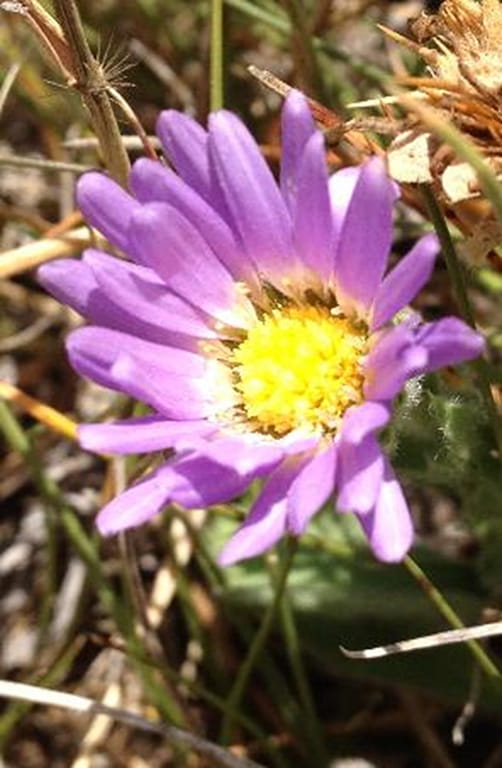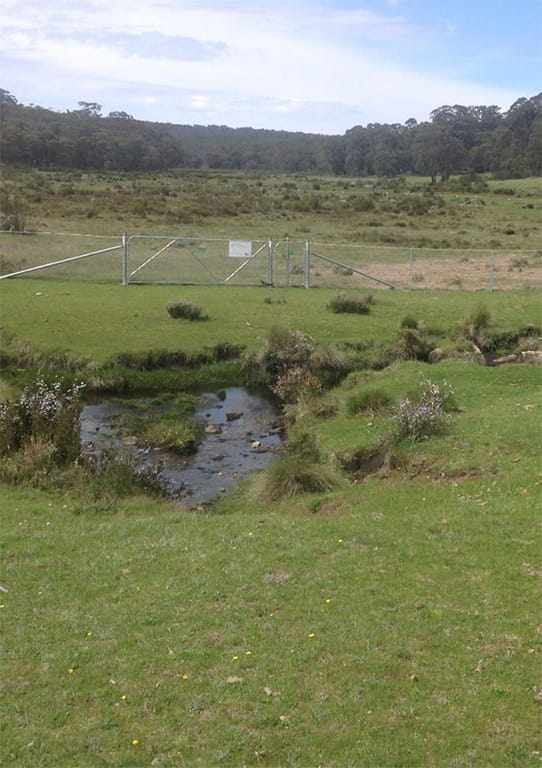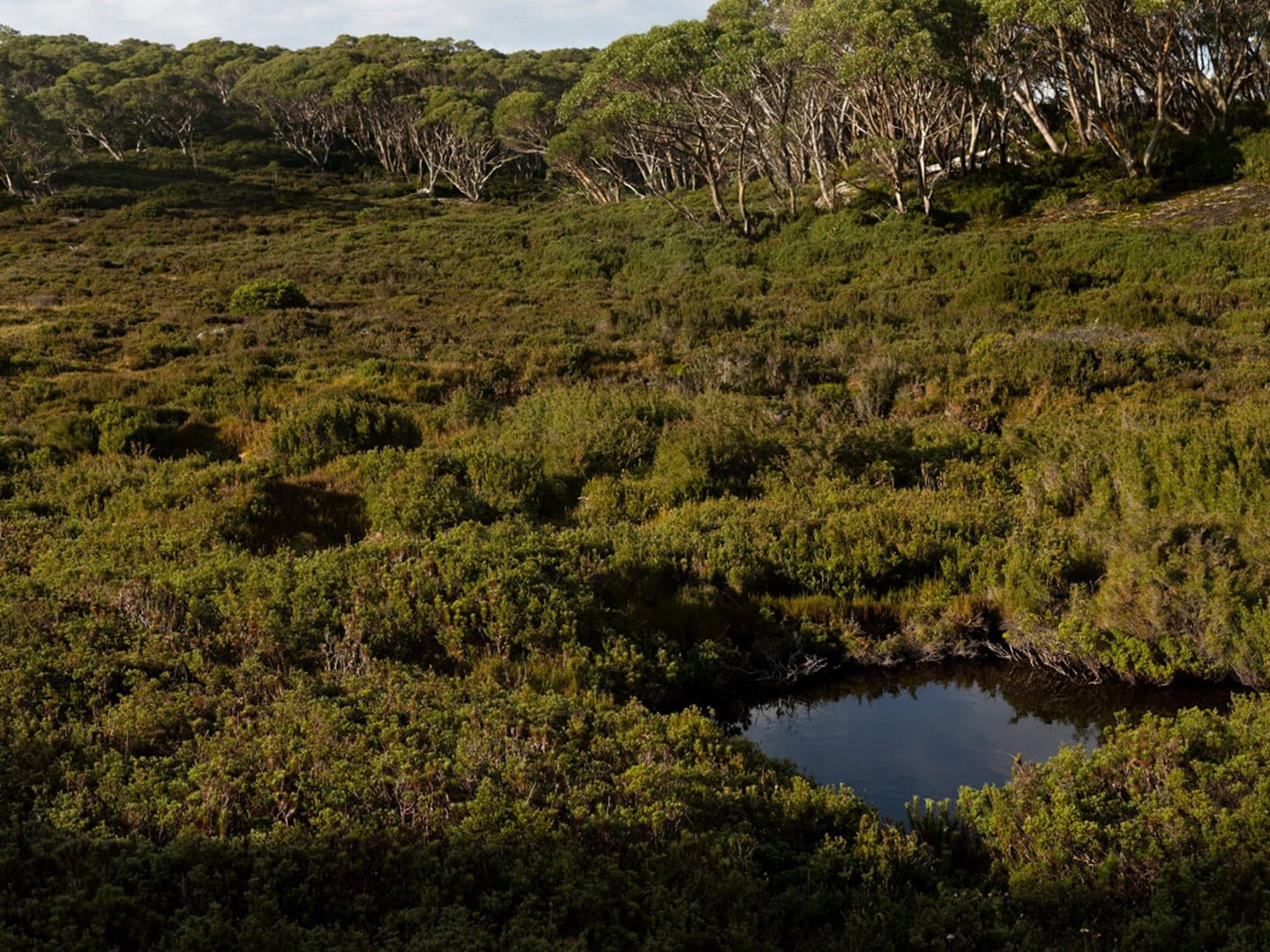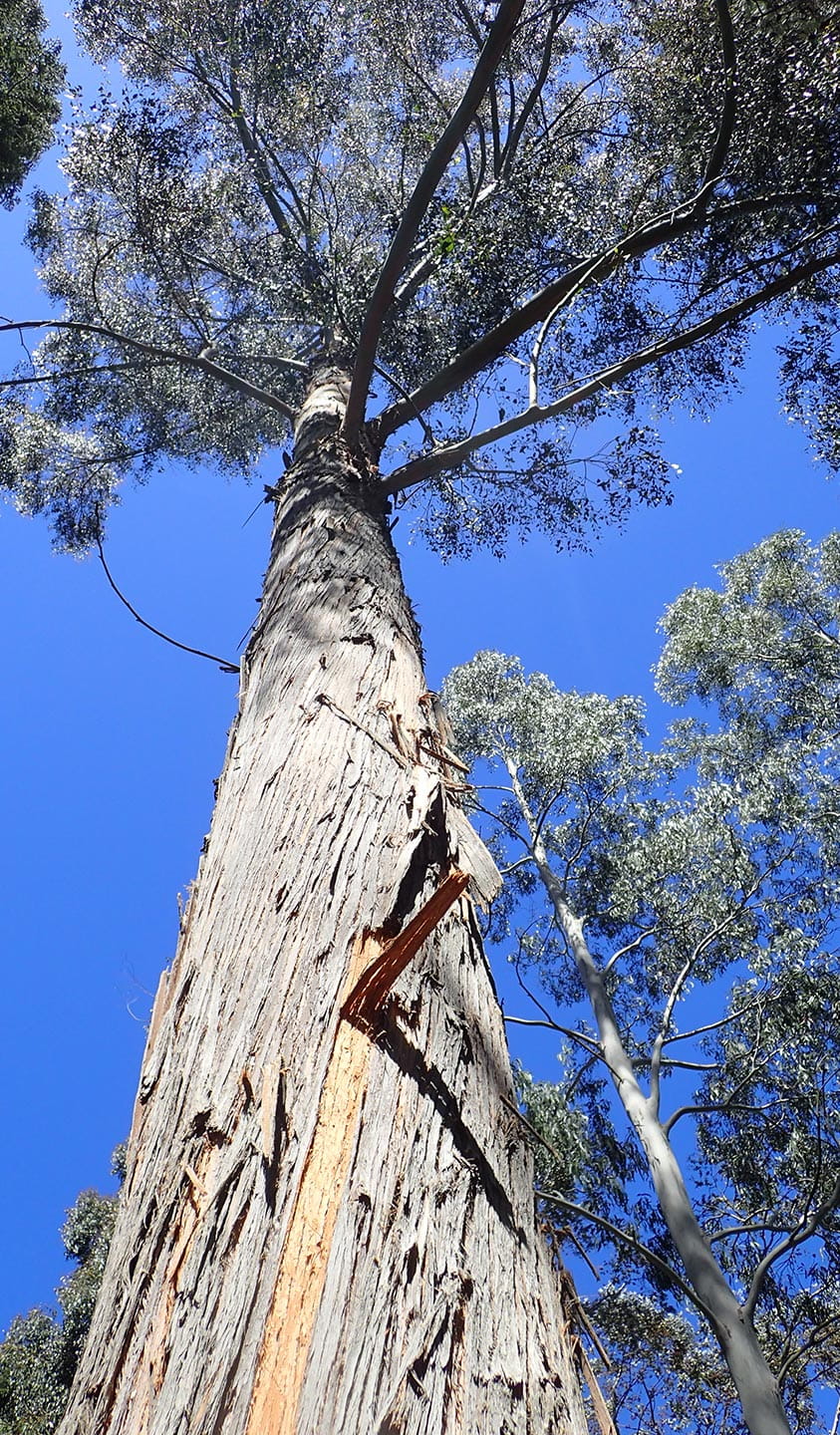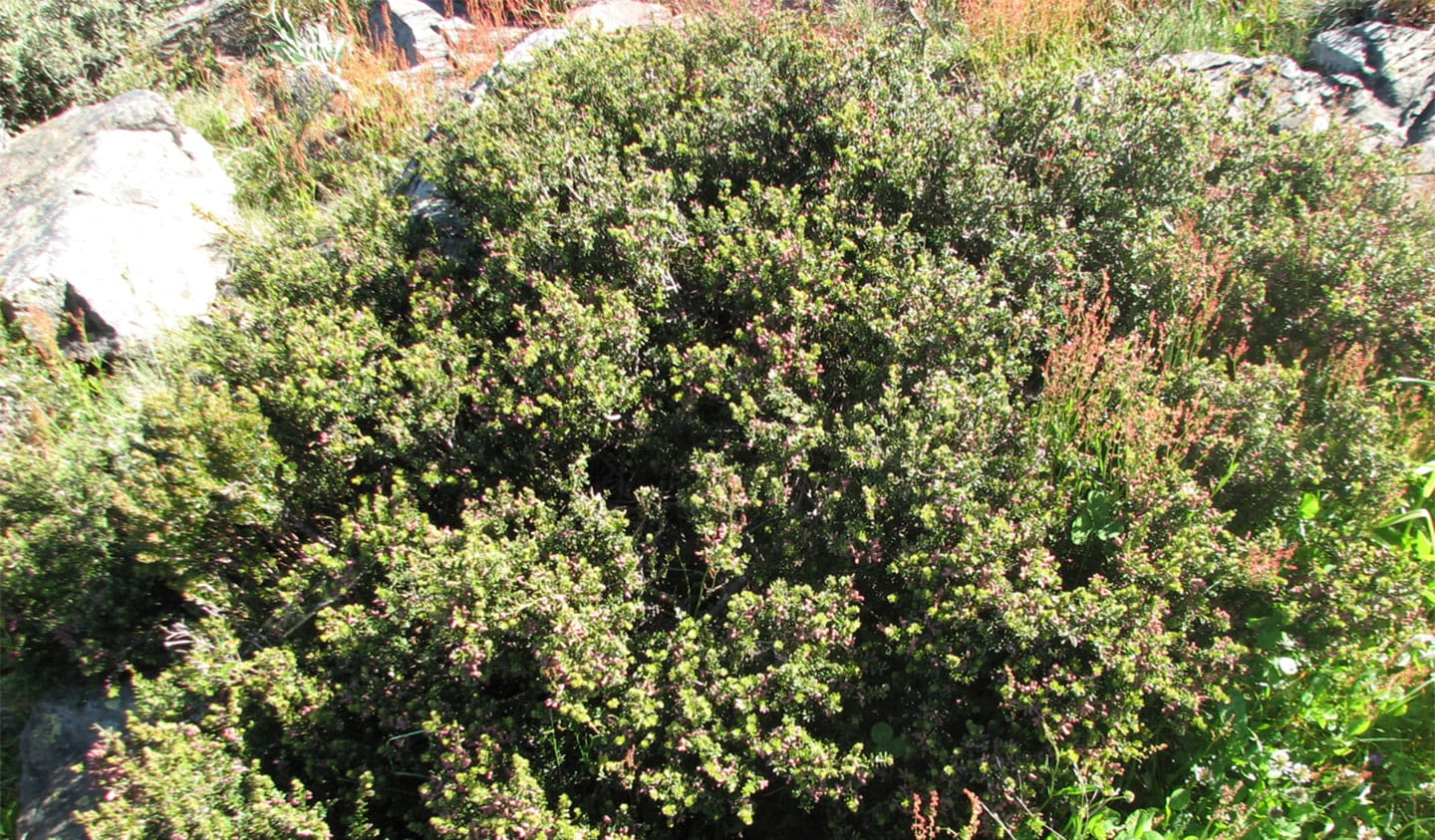Flora
The high elevations of the alps are one of the few habitats without a significant tree line canopy. Vegetation at these elevations is generally restricted to alpine grasses and ground hugging herbs, but trees such as Snow Gums (Eucalyptus pauciflora) do occur and are generally stunted in size.
Alpine vegetation is often fragile and sensitive to disturbance. Parks Victoria’s Greater Alpine National Parks Management Plan (2016) defines more than 60 ecological vegetation classes and most of Victoria’s alpine and treeless vegetation is within this area. It includes alpine and subalpine grasslands, shrublands and heathlands, wetlands, rare alpine peatland and snow patch communities.
The mountain building topography also plays a heavy role in what flora can grow, as many of Victoria’s major rivers and headwaters are known from this region. The snow melt provides significant water flow to the catchments of eastern Australia (Alpine National Park accounts for more than 19% of Victoria’s annual runoff) and defines what ecological communities thrive here. With eight water basins, 22 special water supply catchments and 12 Natural Catchment Areas, the parks generate some of the most reliable and high-quality water to the state.
As the snow begins to melt in spring and temperatures warm, an explosion of grasses, herbs and wildflowers erupt out of the ground, changing the mountainside in swathes of different colours. A staggering one third of all Victoria’s native plant species are known from the region.
Alpine Sphagnum Bogs and Associated Fens
One of the rarer communities in the Victorian alps are the Alpine Sphagnum Bogs and Associated Fens. Many individual species are listed as threatened or endangered, including the critically endangered Mountain Burr-daisy (Calotis pubescens).
Unlike most Eucalypts, this species holds the seed within the highest parts of its canopy and will release them after a fire event. Image credit: Krzysztof Ziarnek
Alpine Ash (Eucalyptus delegatensis)
This large tree is not found on the highest elevations of the Victorian alps but is still considered an iconic feature of the region, generally being restricted to areas between 900-1450 metres.This species can grow to more than 50 metres in height and can take more than 15 years to reach sexual maturity.
Unlike most Eucalypt species, this tree is considered a fire sensitive obligate seeder: the dormant buds do not resprout after a fire.
Increased fire regimes because of human induced climate change are putting entire forests at risk, with an estimated 83,000 hectares of alpine ash forest burnt in the 2019-2020 fires.
The red berries that are produced by this plant are eaten by Mountain Pygmy Possum and other birds but are considered toxic to humans. Image credit: User Melburnian on Wikipedia Commons
Mountain Plum Pine (Podocarpus lawrencei)
Despite being neither a plum nor a pine, this conifer is low growing, occurring throughout the higher elevations of the Victorian alps at no more than a metre in height.At lower elevations, they grow significantly larger, with reports of them reaching 15 metres in height!
They often cling to boulder fields and are a critical ecological component to the diet of the Mountain Pygmy Possum.


